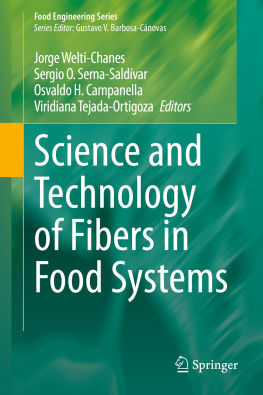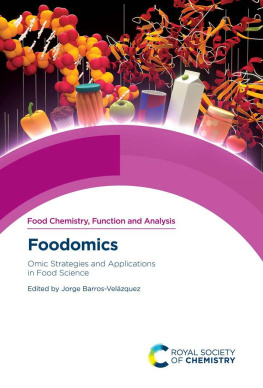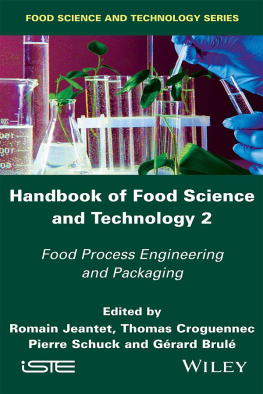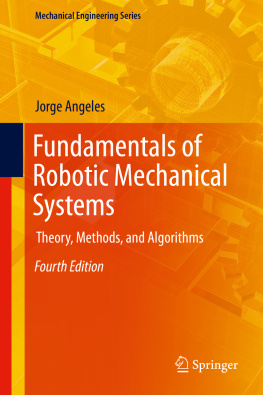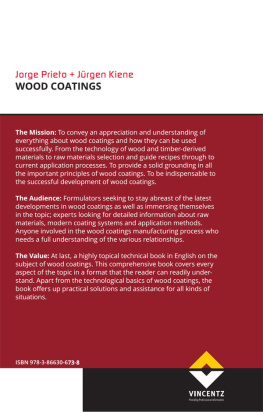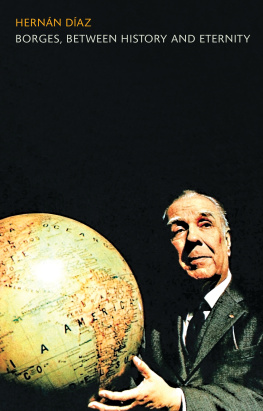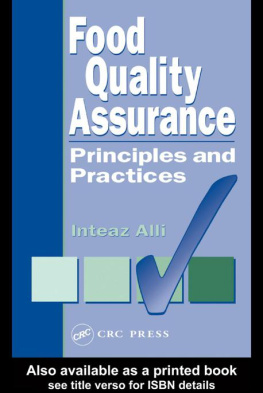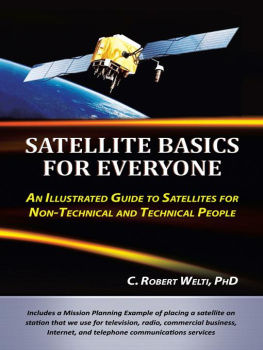Jorge Welti-Chanes - Science and Technology of Fibers in Food Systems
Here you can read online Jorge Welti-Chanes - Science and Technology of Fibers in Food Systems full text of the book (entire story) in english for free. Download pdf and epub, get meaning, cover and reviews about this ebook. year: 2020, publisher: Springer International Publishing, genre: Children. Description of the work, (preface) as well as reviews are available. Best literature library LitArk.com created for fans of good reading and offers a wide selection of genres:
Romance novel
Science fiction
Adventure
Detective
Science
History
Home and family
Prose
Art
Politics
Computer
Non-fiction
Religion
Business
Children
Humor
Choose a favorite category and find really read worthwhile books. Enjoy immersion in the world of imagination, feel the emotions of the characters or learn something new for yourself, make an fascinating discovery.
- Book:Science and Technology of Fibers in Food Systems
- Author:
- Publisher:Springer International Publishing
- Genre:
- Year:2020
- Rating:3 / 5
- Favourites:Add to favourites
- Your mark:
- 60
- 1
- 2
- 3
- 4
- 5
Science and Technology of Fibers in Food Systems: summary, description and annotation
We offer to read an annotation, description, summary or preface (depends on what the author of the book "Science and Technology of Fibers in Food Systems" wrote himself). If you haven't found the necessary information about the book — write in the comments, we will try to find it.
Science and Technology of Fibers in Food Systems — read online for free the complete book (whole text) full work
Below is the text of the book, divided by pages. System saving the place of the last page read, allows you to conveniently read the book "Science and Technology of Fibers in Food Systems" online for free, without having to search again every time where you left off. Put a bookmark, and you can go to the page where you finished reading at any time.
Font size:
Interval:
Bookmark:
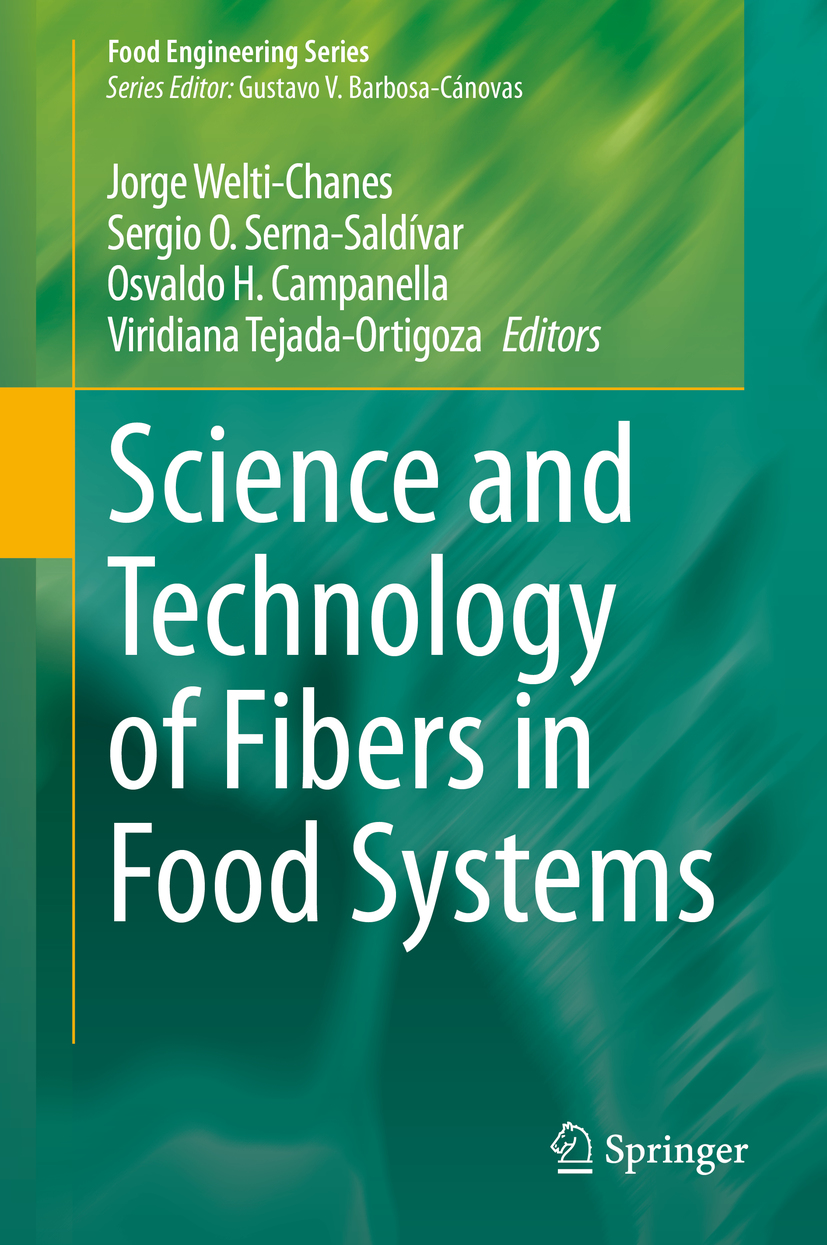
SpringersFood Engineering Seriesis essential to the Food Engineering profession, providing exceptional texts in areas that are necessary for the understanding and development of this constantly evolving discipline. The titles are primarily reference-oriented, targeted to a wide audience including food, mechanical, chemical, and electrical engineers, as well as food scientists and technologists working in the food industry, academia, regulatory industry, or in the design of food manufacturing plants or specialized equipment.
More information about this series at http://www.springer.com/series/5996

This Springer imprint is published by the registered company Springer Nature Switzerland AG
The registered company address is: Gewerbestrasse 11, 6330 Cham, Switzerland
This book was conceptualized to thoroughly cover practical and scientific aspects related to the chemistry, analysis, technology, processing, functionality, and health implications of fiber components associated with different food matrices. This volume was thought and designed as a guide to scientists, students, food product developers, nutritionists, medical doctors, and health practitioners interested in the fascinating field of edible food fibers.
Nowadays, different segments of the food industry are constantly developing and launching new products aimed to benefit the health of consumers. Most of these developments include fiber components intended to reduce the caloric density of foods and the levels of cholesterol-containing lipoproteins and improve gastrointestinal function, glycemic index, blood pressure, and levels of antioxidants that protect mammalian systems against oxidative stress. Moreover, different dietary fiber components act as prebiotics that improve the microbiota or microbiome present in the hindgut. The consumption of dietary fiber in most developed and some developing countries is still very low when compared to the recommended daily requirement. This low-fiber intake has been associated with overweight, obesity, metabolic syndrome, chronic or noncommunicable diseases, and cancer , which undoubtedly are the main causes of deaths throughout the globe.
Renowned scientists made their best effort to comprise in each chapter their scientific and technical experiences related to the chemistry, technology, processing, and health implications of diverse fibers associated with different foods. The first section of the book is composed of seven chapters designed to cover the fundamental aspects related to the architecture and structure of cell walls, the chemistry and physical properties of fiber components, the relationship of fiber components with other minor essential nutrients and antioxidants, and the different analytical assays to assess total, insoluble, and soluble fibers and their specific components. Several chapters that detail the fiber composition of cereals, legumes, pseudocereals , fruits, and vegetables are also introduced. Needless to say, these introductory chapters are fundamental to better understand the subsequent sections of the book.
The second section of the book was planned to cover relevant aspects related to the strong relationship between fiber components and health. These chapters deal with causes and prevention of obesity, diabetes, cancer, and hyperlipidemia /hypertension, which are strongly related to cardiovascular diseases , and the important role of fiber in the gut health especially in terms of prebiotic effects and modulation of the microbiota composition. The authors of these chapters made their best effort to explain how different fibers affect key physiological mechanisms and population dynamics of microorganisms present in the large intestine.
The third section of the book consists of chapters that cover how different conventional and emerging processes used in the food industry are used to extract fibers but also how these treatments affect and modify the fiber components to enhance the functional, sensory, and texture properties of fiber-enriched foods. Specific chapters related to various types of thermal and chemical and biocatalytic processes clearly explain how time, temperature, pressure, chemical reactions, and the use of different enzymes affect fiber components and their functionality during the extraction, especially in terms of water absorption, water solubility, oil holding capacity, gel formation capacity, fat emulsification, fermentation capacity, and prebiotic effects. Likewise, the effects of traditional thermal and emerging technologies such as high hydrostatic pressure, ultrasound, and microwave on fiber composition and functionality are comprehensively covered. Finally, the use of dietary fibers in foods and their application during formulation and processing is also discussed. At the end of each chapter, a set of updated references are included with the aim of providing key scientific material useful to expand the knowledge of the readers.
Font size:
Interval:
Bookmark:
Similar books «Science and Technology of Fibers in Food Systems»
Look at similar books to Science and Technology of Fibers in Food Systems. We have selected literature similar in name and meaning in the hope of providing readers with more options to find new, interesting, not yet read works.
Discussion, reviews of the book Science and Technology of Fibers in Food Systems and just readers' own opinions. Leave your comments, write what you think about the work, its meaning or the main characters. Specify what exactly you liked and what you didn't like, and why you think so.

